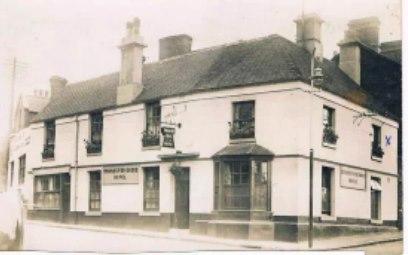Family Stories From The Other Side ~ Book Two
My Fathers Family
Edwards ~ Tomlinson ~ Stokes ~ Fisher
Reginald Garnet Edwards was born on 2 April 1934 at the Worcester Cross pub in Kidderminster.
The X on right is the room he was born in:

I hadn’t done much research on the Edwards family because my fathers cousin, Paul Weaver, had already done it and had an excellent website online. I decided to start from scratch and do it all myself because it’s so much more interesting to do the research myself than look at lists of names and dates that don’t really mean anything. Immediately after I decided to do this, I found that Paul’s family tree website was no longer online to refer to anyway!
I started with the Edwards family in Birmingham and immediately had a problem: there were far too many John Edwards in Birmingham at the time. I’ll return to the Edwards in a later chapter, and start with my fathers mothers mothers family, the Fishers.
So the Story goes...